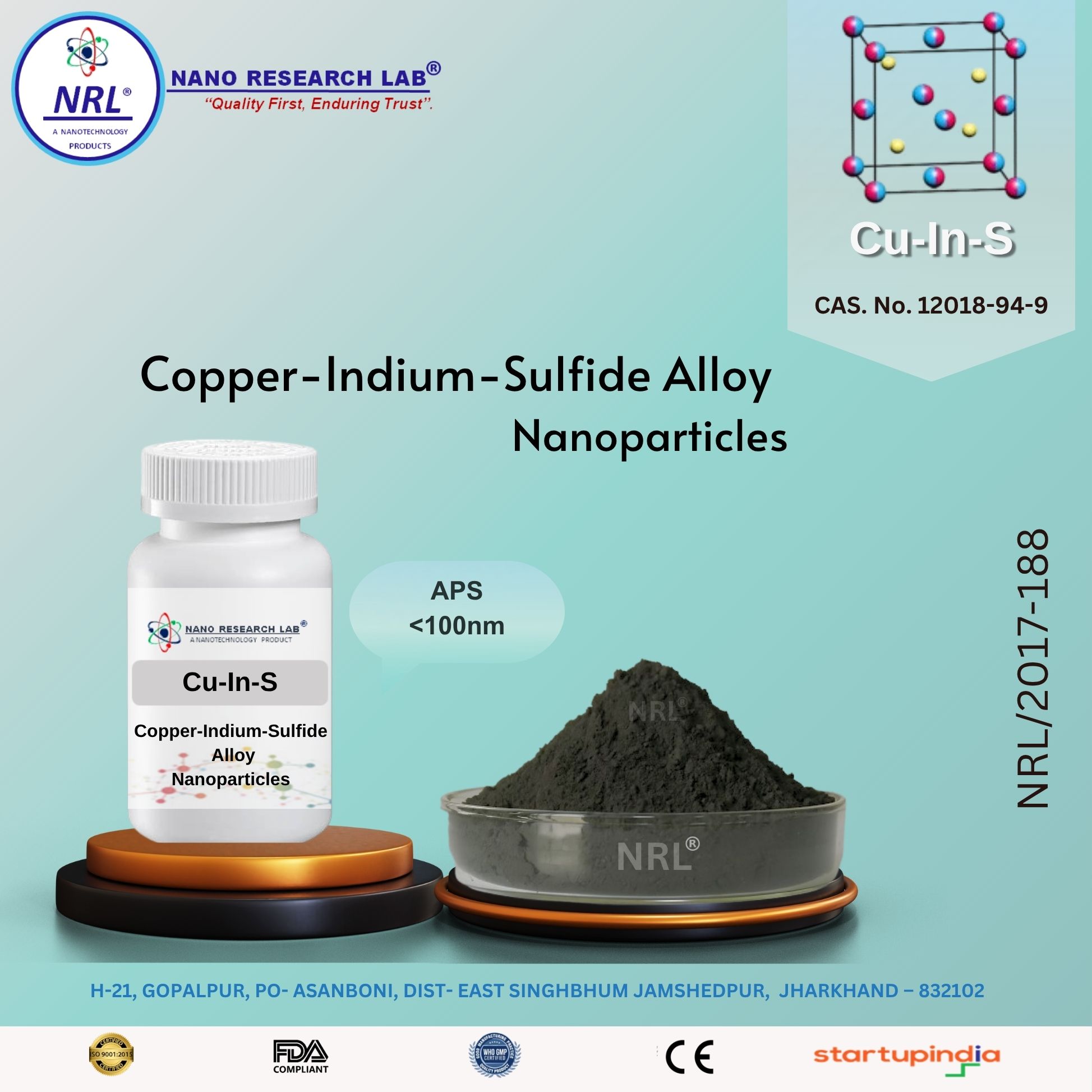
Cu-In-S Alloy Nanoparticles/Nanopowder (99.5%, <100nm)
₹1475.00
🧪 Cu-In-S Alloy Nanoparticles / Nanopowder (Purity 99.5%, Particle Size <100 nm)
⚙️ Technical Specifications
Property | Specification |
|---|---|
Material Name | Copper-Indium-Sulfide (Cu-In-S) Alloy Nanoparticles |
Composition | Cu-In-S (customizable stoichiometry, commonly used for CIS applications) |
Purity | 99.5% |
Average Particle Size | <100 nm |
Appearance / Color | Dark gray to black fine powder |
Crystal Structure | Chalcopyrite / Tetragonal (CIS structure) |
Density | ~5.0–5.5 g/cm³ (composition-dependent) |
Melting Point | 700–900 °C (alloy-dependent) |
Electrical Conductivity | Moderate to high, suitable for semiconductor applications |
Thermal Conductivity | Good, suitable for optoelectronic devices |
Solubility | Insoluble in water; stable under ambient conditions |
CAS Number | 7440-50-8 (Cu), 7440-74-6 (In), 7704-34-9 (S) |
Storage Conditions | Store in airtight, dry container; avoid moisture, strong acids, and oxidizers |
🌟 Key Features
High-purity Cu-In-S nanoparticles (<100 nm)
Semiconducting chalcopyrite structure for optoelectronic applications
Uniform nanoscale particle distribution
Stable under ambient conditions with low oxidation
Customizable composition for targeted bandgap engineering
Ideal for photovoltaic, photodetector, and sensor applications
🔬 Applications
1. Photovoltaics & Solar Cells
Used in CIS (Copper Indium Sulfide) thin-film solar cells
Enhances light absorption, efficiency, and thermal stability
2. Optoelectronics & Sensors
Suitable for photodetectors, LEDs, and nanostructured sensors
Tailored bandgap allows tunable optical properties
3. Nanocomposites
Incorporated in polymers, glasses, or ceramic matrices for functional devices
4. Catalysis
Used as catalyst or catalyst support in electrochemical and photocatalytic applications
5. Research & Material Science
Ideal for nanomaterial synthesis, thin-film studies, and semiconductor research
⚠️ Handling & Storage
Store in a dry, airtight container to avoid moisture absorption
Avoid contact with strong acids, bases, and oxidizing agents
Handle with gloves, mask, and protective eyewear
Use in well-ventilated areas to prevent nanoparticle inhalation
Keep away from heat, sparks, and direct sunlight
